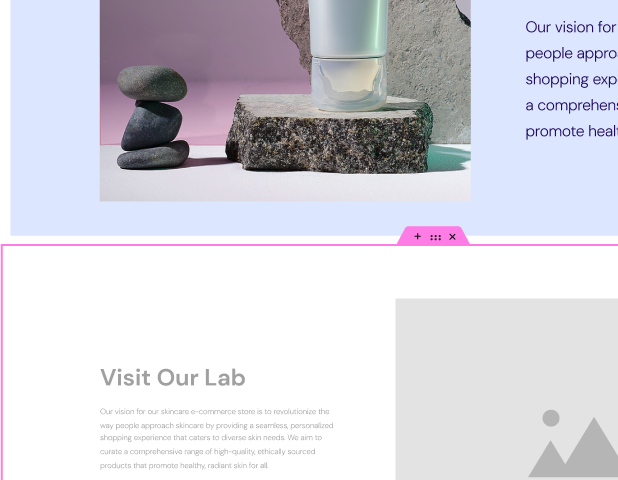Table of Contents
How do you keep your brand safe? That’s where trademarks help. A trademark is a legal shield for your brand name, logo, or slogan. It stops others from using it and mixing up your customers. It’s like a fence around your brand. It keeps your hard work and ideas as your own.
In this guide, we’ll show you the seven main steps to trademark a name in the US. We’ll explain the process, tell you what the law needs, and give you useful tips. This guide will help you whether you’re starting a new business or growing an existing one. You’ll learn how to protect your brand and make it last.
Understanding Trademarks
What is a Trademark?
A trademark is your brand’s special mark. It can be a word, phrase, symbol, design, or a mix of these. It sets your goods or services apart from others. Think of it as your brand’s signature. It tells people who you are and what you sell. Nike’s swoosh, McDonald’s golden arches, and the name “Apple” are all trademarks. They help people know and trust a brand.
Types of Trademarks
Trademarks come in different forms. Each type protects your brand in its own way:
- Word marks: These protect the words in your brand name.
- Logos: These guard the visual design of your brand.
- Slogans: These protect catchy phrases linked to your products or services.
There are also less common trademarks like sounds, colors, and even smells. But these can be harder to register.
Why Register Your Trademark?
Registering your trademark with the United States Patent and Trademark Office (USPTO) gives you several benefits:
- You get exclusive rights to use your mark across the country for your goods or services.
- You can legally stop others from using a similar mark that might confuse customers.
- If someone copies your brand, you have stronger legal protection. This makes it easier to defend your rights and get compensation if needed.
Grow Your Sales
- Incredibly Fast Store
- Sales Optimization
- Enterprise-Grade Security
- 24/7 Expert Service

- Incredibly Fast Store
- Sales Optimization
- Enterprise-Grade Security
- 24/7 Expert Service
- Prompt your Code & Add Custom Code, HTML, or CSS with ease
- Generate or edit with AI for Tailored Images
- Use Copilot for predictive stylized container layouts

- Prompt your Code & Add Custom Code, HTML, or CSS with ease
- Generate or edit with AI for Tailored Images
- Use Copilot for predictive stylized container layouts
- Craft or Translate Content at Lightning Speed
Top-Performing Website
- Super-Fast Websites
- Enterprise-Grade Security
- Any Site, Every Business
- 24/7 Expert Service

Top-Performing Website
- Super-Fast Websites
- Enterprise-Grade Security
- Any Site, Every Business
- 24/7 Expert Service
- Drag & Drop Website Builder, No Code Required
- Over 100 Widgets, for Every Purpose
- Professional Design Features for Pixel Perfect Design

- Drag & Drop Website Builder, No Code Required
- Over 100 Widgets, for Every Purpose
- Professional Design Features for Pixel Perfect Design
- Marketing & eCommerce Features to Increase Conversion
- Ensure Reliable Email Delivery for Your Website
- Simple Setup, No SMTP Configuration Needed
- Centralized Email Insights for Better Tracking

- Ensure Reliable Email Delivery for Your Website
- Simple Setup, No SMTP Configuration Needed
- Centralized Email Insights for Better Tracking

- Ensure Reliable Email Delivery for Your Website
- Simple Setup, No SMTP Configuration Needed
- Centralized Email Insights for Better Tracking
Step 1: Trademark Search – A Crucial First Step
Picking a brand name is exciting, but hold on! Before you fall in love with a name, make sure it’s free to use. Using a name that’s already taken can lead to big problems. You might get sued for using someone else’s trademark. You could be forced to rebrand, losing all the goodwill you’ve built. All your time and money spent on branding would go to waste.
A good trademark search helps you avoid these issues. It’s like checking if a username is taken before you sign up for a website. You want to make sure your brand name is truly yours.
How to Search: The USPTO Database
Your first stop is the United States Patent and Trademark Office (USPTO) database. They have a tool called the Trademark Electronic Search System (TESS). TESS lets you search for existing trademarks, including words, logos, and even trademark owners. The USPTO website has guides to help you use TESS. Take your time to learn how it works.
Pro Tip: Do more than just search for exact matches. Look for similar spellings and sounds, too. For example, if you want to use “Bright Ideas,” also check for “Brite Ideas” or “Bright Ideaz.”
Other Places to Look
TESS is great, but there are other places to check.
Consider searching state databases, as some trademarks are only registered in one state. Do internet searches to see if anyone’s using the name, even if it’s not trademarked. Also, check business name registries to see if the name is being used as a company name.
Remember, the more places you look, the safer you’ll be. It’s better to spend extra time searching now than to face problems later.
Step 2: Choose a Strong Trademark
Your trademark is more than just a name. It’s the core of your brand identity. A good trademark helps you stand out and stick in customers’ minds. Let’s look at what makes a trademark strong and how to create one.
The key to a strong trademark is distinctiveness. A distinctive trademark is unique, easy to remember, and different from other brands. The more distinctive your trademark, the better protected it is by law. It’s also easier for people to recognize your brand.
Types of Trademarks
The U.S. Patent and Trademark Office (USPTO) groups trademark into four types.
- Fanciful trademarks are made-up words like “Kodak” or “Exxon.” These are the strongest.
- Arbitrary trademarks use real words in an unrelated way, like “Apple” for computers. These are also very strong.
- Suggestive trademarks hint at what you do without saying it directly, like “Netflix” for streaming. These are good too.
- Descriptive trademarks directly describe what you do, like “Clean Clothes” for detergent. These are harder to protect.
What to Avoid
Stay away from generic terms. These are common words that describe a whole group of products, like “Shoe Store” for a shoe shop. You can’t trademark these.
Also, be careful with descriptive terms. These directly describe your product or service, like “Fast Delivery” for a courier. They’re easier to trademark if you’ve used them a lot and people strongly link them to your brand.
Tips for Creating a Great Trademark
When creating your trademark, be creative. Think of unique words or phrases that capture your brand’s spirit. Keep it simple by choosing something easy to say and remember. If you’re using a logo, make sure it fits well with your name. Don’t forget to check if you can use the name for your website and social media too.
Use the USPTO’s Trademark Electronic Search System (TESS) to check if your idea has already been taken. This step is crucial to avoid potential conflicts later.
Use AI for Ideas
Tools like Elementor’s AI can help you brainstorm. You can use it to generate creative name ideas based on your brand values and create potential logos and designs.

These tools can spark your creativity and help you explore options you might not have considered.
Remember, a strong trademark is an investment in your brand’s future. Take your time to create something unique and memorable. It will help you build a brand that people recognize and trust. Your trademark is often the first thing people notice about your brand, so make it count!
Step 3: Pick Trademark Classes
Trademark classes are like sections in a big store. Each section holds different types of products or services. The U.S. Patent and Trademark Office (USPTO) uses 45 classes to sort trademarks. This helps prevent similar marks from confusing customers.
For example:
- Class 25 is for clothes
- Class 35 is for business services
When you apply for a trademark, you need to say which class or classes your products or services fit into.
Use the Trademark ID Manual
The USPTO has a helpful tool called the Trademark ID Manual. It’s like a map of all 45 classes. It tells you what goes on in each class. You can search for words or look through a list to find where your products or services belong.
Take your time with this step. It’s okay to ask for help. Getting this right is important for protecting your brand.
Getting Help
Sometimes, it’s good to ask an expert. A trademark lawyer can help if:
- Your products or services are unusual
- You’re not sure which classes to pick
Getting help can make sure your application is done right.
Step 4: File Your Trademark Application
Choosing How to File
You have two main ways to file:
- Actual use: You’re already using the trademark in your business.
- Intent to use: You plan to use the trademark soon but haven’t started yet.
If you’re already selling products or services with your trademark, go with “actual use.” You’ll need to show proof, like pictures of your products or website.
If you’re not selling yet but want to save your trademark, use “intent to use.” You’ll have to show you’re using it within a few months to a few years.
Getting Your Application Ready
Your trademark application is like a detailed form about your brand. You’ll need to give the USPTO:
- Your name and address (or your business’s info)
- A clear description of your trademark
- A list of what you’re selling with this trademark
- Whether you’re using the trademark now or plan to use it soon
- Proof of how you’re using the trademark (if you’re already using it)
- The filing fee (the cost changes based on what you’re filing for)
Take your time to get all this info right. Mistakes can slow things down.
Using TEAS to File
TEAS stands for Trademark Electronic Application System. It’s the USPTO’s online tool for filing trademark applications. Here’s how to use it:
- Make an account on the USPTO website
- Log in to TEAS
- Fill in all your information
- Upload any documents you need
- Pay the fee
- Submit your application
Remember: Save a copy of everything you submit. You might need to look at it later.
Step 5: USPTO Review Process
A Trademark Lawyer Checks Your Application
After you send in your trademark application, it waits in line at the USPTO (U.S. Patent and Trademark Office). A trademark lawyer will look at it carefully. They make sure it follows all the rules and doesn’t clash with other trademarks. This is like having a teacher check your homework before you turn it in.
The lawyer looks for these things:
- Is your trademark unique? It shouldn’t be too similar to others.
- Did you describe your products or services correctly?
- Did you give all the needed information?
- Does your trademark follow all the laws?
This check can take a few months. Don’t worry if it takes a while. The lawyer is thorough in helping protect your trademark.
Answering Questions from the USPTO
Sometimes, the lawyer might have questions or concerns. They’ll send you an “Office Action.” This is like getting notes on your homework. You need to answer their questions or fix any problems they find.
An Office Action might ask you to:
- Explain parts of your application more clearly
- Show more proof of how you’re using the trademark
- Explain why your trademark isn’t too similar to others
If the legal talk in the Office Action confuses you, it’s okay to ask a trademark lawyer for help. They can help you write a good response.
Your Trademark Goes Public
If your application passes the lawyer’s check, it moves to the next step. The USPTO puts your trademark in a special book called the Official Gazette, which allows other people to see it.
For 30 days, anyone can say they don’t think your trademark should be approved. If someone does this, you’ll need to explain why your trademark should still be registered. It’s like defending your idea in a debate.
Step 6: Trademark Registration
Getting the Green Light
If no one objects to your trademark (or if you win any debates about it), the USPTO will send you a Notice of Allowance. This means your trademark is approved! But you might have one more step.
If you said you were going to use the trademark when you applied (but weren’t using it yet), now you need to show that you’re really using it. You’ll send in a Statement of Use with proof.
If you were already using the trademark when you applied, you can skip this step.
Showing How You Use Your Trademark
When you show how you’re using your trademark, you need to give real examples. These could be:
- Pictures of your trademark on product labels
- Photos of your trademark in ads
- Screenshots of your website with the trademark
- Brochures or catalogs with the trademark
These examples should show your trademark exactly as you described it in your application.
Getting Your Official Trademark Paper
After the USPTO checks your proof (if they need it), they’ll send you a Trademark Registration Certificate. This official paper says you own the trademark. It gives you the right to use it across the country for the products or services you listed.
Congratulations! You’ve made it through the process, and your brand now has legal protection. But remember, you need to keep using your trademark and renew it every so often to maintain your rights.
Step 7: Keeping Your Trademark Safe and Strong
Using and Renewing Your Trademark
Getting your trademark is a big deal, but your work is still ongoing. You need to keep using your trademark to keep it valid. This means putting it on your products, packaging, ads, or website. It’s like exercising to stay healthy – you have to keep at it.
You also need to renew your trademark every ten years. You can keep renewing it as long as you use it and pay the fees. It’s like renewing your driver’s license to keep driving.
Watching for Copycats
Once you have your trademark, you need to look out for anyone using it without permission. This could hurt your brand. Here are some ways to keep watch:
- Search online: Look for your trademark on search engines and social media.
- Use Google Alerts: Set up alerts for your trademark. Google will email you when it finds your trademark online.
- Hire help: Some companies can watch for your trademark and tell you if they find someone using it.
The sooner you find someone using your trademark, the easier it is to stop them.
What to Do If Someone Copies Your Trademark
If you find someone using your trademark without asking, don’t panic. Here’s what you can do:
- Get proof: Take screenshots or photos of where they’re using your trademark. Write down when and where you saw it.
- Send a warning letter: This is called a “cease and desist” letter. It tells the person to stop using your trademark. A lawyer can help you write this letter.
- Take legal action: If the letter doesn’t work, you should go to court. You could file a complaint with the Trademark Trial and Appeal Board (TTAB) or sue in federal court.
Remember, protecting your trademark is an ongoing job. You need to act fast if someone uses it without permission. This keeps your brand strong and valuable.
Tip: If you have a website for your brand, create a page explaining how people can use your trademark. This can help prevent people from using it incorrectly. You can use a website builder like Elementor to create this page.
DIY Trademark vs. Hiring an Attorney
Should You Do It Yourself?
Doing your own trademark work can save money, but it comes with risks. On the plus side, you’ll save on lawyer fees and learn a lot about how trademarks work. You’ll also have full control over the process. However, trademark law is tricky. Small mistakes can cause big problems. It takes a lot of time to do it right, and you might miss important details without legal know-how.
When to Think About Hiring a Lawyer
Sometimes, it’s smart to get help from a trademark lawyer. Consider this if your case is complex, like using the trademark for many types of products. A lawyer can also help if you don’t have much time to work on it yourself. If your trademark is very important to your business or you want to use it in other countries, professional help can be valuable.
A lawyer costs more, but they can make the process easier and safer. They know the tricks and traps of trademark law. Deciding to do it yourself or hire a lawyer depends on your situation. If you have time and like learning new things, doing it yourself can work. But if you’re busy or worried about making mistakes, a lawyer can give you peace of mind.
How to Build a Strong Brand Online
These days, your website is often the first thing people see about your brand. It’s like your shop window on the internet. A good website shows what you sell, tells your brand’s story, and helps people trust you.
Your website should look and feel like your brand. The colors, words, and pictures should all match your trademark.
Using Elementor to Make Your Website
Elementor is a tool for building websites. You don’t need to know how to code. It’s like having a team of web designers help you.
With Elementor, you can choose from many pre-made designs and build your pages by dragging and dropping parts. It makes your site look good on phones and computers. Elementor even has AI tools to help you write and design your site.
Making Sure People Find Your Website
It’s important that people can find your website when they search online. This is called search engine optimization (SEO).
Elementor helps with SEO by making your site load fast, helping you add important information for search engines, and making your site easy to use on phones. A good trademark and a great website work together. They help people find you online and remember your brand.
Wrapping Up
Let’s quickly go over the steps to trademark a name in the US. First, search to see if anyone’s already using the name. Then, pick a strong, unique trademark. Decide what types of products or services your trademark is for.
Send your application to the USPTO. Answer any questions from the USPTO. Get your official trademark paper. Finally, keep using your trademark and stop others from copying it.
Remember, your brand name is special. It’s the face of your business. Protecting it with a trademark is smart. It stops others from using your name and confusing your customers.
As you work on your trademark, remember to make a good website, too. Tools like Elementor can help you build a site that looks great and helps people find you online.
Looking for fresh content?
By entering your email, you agree to receive Elementor emails, including marketing emails,
and agree to our Terms & Conditions and Privacy Policy.

